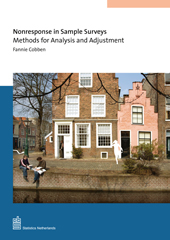Nonresponse in Sample Surveys, Methods for Analysis and Adjustment


The response to a survey will never be 100%, nor will it be completely non-selective. This causes a bias in statistics based on survey research. In this PhD-thesis written by Fannie Cobben various methods for the treatment of nonresponse in sample surveys are described.
Persons that do not participate in survey research often do so for different reasons. For example, persons that cannot be contacted during the fieldwork often have different reasons not to respond than persons that refuse participation because they are not interested in the survey topic. When analysing nonresponse, and also when adjusting for nonresponse bias, it is important to distinguish between different types of respondents. In this thesis, a number of methods are described that account for different response types.
A higher response rate is not necessarily better. It is also important to look at the balance of characteristics in the response. Therefore, an indicator for the quality of survey response has been developed; the Representativeness-indicator or R-indicator. The R-indicator displays how balanced the composition of the response is compared to the composition of the target population, with respect to certain characteristics such as ethnicity or age.
Downloads
- PDF - 2009-x11-cobben